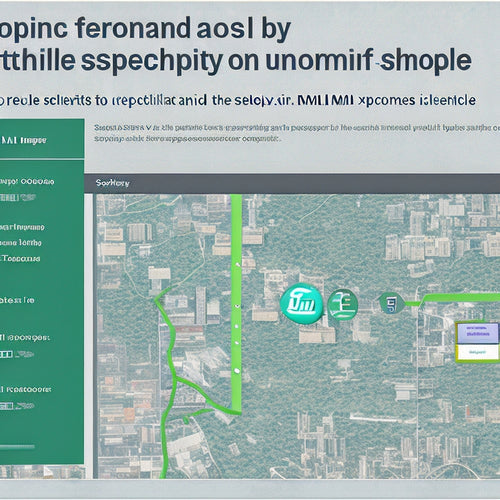Best Paid Shopify Apps to Increase Conversion
Share
This article aims to provide an informative and detailed analysis of the best paid Shopify apps that can effectively increase conversion rates.
- Enhanced user experience
- Boosted sales performance
- Improved customer satisfaction
- Streamlined marketing strategies
Benefits of Paid Shopify Apps
This discussion aims to explore the benefits of utilizing paid Shopify apps for enhancing user experience, boosting sales performance, improving customer satisfaction, streamlining marketing strategies, and increasing website conversions.
Implementing these apps can significantly enhance the overall user experience by providing additional features and functionalities that cater to specific needs and preferences.
Furthermore, they have proven to be effective in boosting sales performance through various tactics such as personalized recommendations and targeted promotions.
Additionally, these apps contribute to improved customer satisfaction by offering seamless navigation, fast-loading pages, and convenient checkout processes.
Enhanced User Experience
Enhanced user experience can be achieved through the implementation of various paid Shopify apps that are available to increase conversion rates. These apps offer a range of features and functionalities designed to improve user engagement and optimize conversions.
One such app is the live chat feature, which allows customers to interact with businesses in real-time, addressing their queries and concerns promptly. This not only enhances customer satisfaction but also increases the likelihood of completing a purchase.
Another useful app is the product recommendation tool, which analyzes customer behavior and preferences to provide personalized product suggestions. By tailoring recommendations to individual users, this app encourages them to explore more products and make additional purchases.
Overall, these paid Shopify apps effectively enhance user experience by engaging customers and optimizing conversions, thus contributing to business growth and success.
Boosted Sales Performance
Implementing various strategies can significantly improve sales performance, leading to increased revenue and business growth.
One effective strategy is to utilize paid Shopify apps that are designed specifically to boost sales performance. These apps offer a range of features and functionalities that can enhance the overall shopping experience for customers, ultimately driving more conversions.
For example, apps like Product Upsell and Cross Sell enable businesses to offer personalized product recommendations at the point of purchase, increasing the chances of upselling or cross-selling additional items.
Similarly, apps like Abandoned Cart Recovery help recover lost sales by sending automated email reminders to customers who have left items in their cart without completing the purchase.
Improved Customer Satisfaction
To achieve improved customer satisfaction, businesses can utilize various strategies that enhance the overall shopping experience, resulting in higher levels of satisfaction and loyalty from customers.
One effective strategy is implementing personalized recommendations based on customer preferences and browsing history. By leveraging data analytics and artificial intelligence algorithms, businesses can analyze customer behavior patterns to provide tailored product suggestions. These personalized recommendations not only enhance the shopping experience but also increase the likelihood of purchase by offering relevant and appealing options to customers.
Additionally, personalized recommendations contribute to customer retention by fostering a sense of individual attention and care. Customers feel valued when their unique needs are understood and catered to, leading to increased trust in the business and a higher likelihood of repeat purchases.
Overall, incorporating personalized recommendations into the shopping experience significantly improves customer satisfaction and loyalty.
Streamlined Marketing Strategies
Streamlined marketing strategies involve optimizing and aligning various promotional activities to ensure a cohesive and efficient approach in reaching the target audience. By implementing these strategies, businesses can increase their conversion rates and maximize the effectiveness of their marketing efforts.
One key aspect of streamlined marketing is the use of marketing automation tools. These tools automate repetitive tasks such as email marketing, social media posting, and lead nurturing, allowing businesses to save time and resources while maintaining a consistent brand message across multiple channels.
Marketing automation also enables businesses to track customer behavior and personalize their messaging based on individual preferences, leading to higher engagement and conversion rates.
Additionally, by streamlining their marketing processes through automation, businesses can identify areas for improvement more easily and make data-driven decisions to continually optimize their campaigns for better results.
Increased Website Conversions
One potential approach to increasing website conversions involves optimizing the user experience by improving website navigation, reducing page load times, and enhancing overall website design. These strategies aim to create a seamless browsing experience for visitors, encouraging them to explore further and ultimately convert into customers. Effective conversion strategies not only focus on driving increased website traffic but also aim to maximize the chances of converting that traffic into actual sales or leads.
Improving website navigation can help users easily find what they are looking for, leading to a higher likelihood of conversion. By implementing clear menus, intuitive search functions, and logical categorization of products or services, visitors can quickly navigate through the site and find relevant information or products.
Reducing page load times is crucial in today's fast-paced online environment. Slow-loading pages can lead to frustration and high bounce rates, resulting in missed opportunities for conversions. Optimizing images, minimizing code bloat, and utilizing caching techniques are some effective ways to improve page load times.
Enhancing overall website design involves creating visually appealing layouts that align with your brand identity while also focusing on usability. A well-designed website instills trust in visitors while providing an enjoyable browsing experience. This can include using high-quality images, clear call-to-action buttons, easy-to-read text fonts, and consistent branding throughout the site.
Tips for Shopify App Integration
This discussion will focus on the key points of app compatibility and integration, optimizing user experience, tracking and analytics, and conversion rate optimization in the context of Shopify apps.
App compatibility and integration are crucial for ensuring seamless functionality and a smooth user experience on the platform.
Optimizing user experience involves enhancing navigation, design, and performance to increase customer satisfaction and loyalty.
Tracking and analytics help businesses to gather valuable data insights that can be used to make informed decisions and improve overall performance.
Conversion rate optimization aims at increasing the percentage of visitors who take desired actions such as making a purchase.
App Compatibility and Integration
App compatibility and integration is crucial for ensuring that the selected Shopify apps seamlessly integrate with the existing systems and do not disrupt the functionality of the online store. When choosing apps for a Shopify store, it is important to consider their compatibility with other installed apps and the overall system.
App customization allows users to tailor the app's features and appearance to fit their specific needs and branding. This ensures a cohesive and personalized user experience on the online store.
Additionally, app performance plays a significant role in maintaining website speed and functionality. It is essential to select apps that are optimized for performance, as slow loading times or glitches can negatively impact user experience and potentially lead to decreased conversion rates.
Optimizing User Experience
Optimizing the user experience on a Shopify store involves implementing design elements and features that enhance navigation, accessibility, and overall usability.
Enhancing navigation is crucial for users to easily find the products they are looking for, resulting in increased conversion rates. This can be achieved by organizing categories and subcategories logically, providing clear and concise menus, and incorporating search functionality with relevant filters.
Improving the checkout process is equally important as it directly impacts customers' decision-making process. Simplifying the steps required to complete a purchase, reducing form fields to only essential information, offering guest checkout options, and providing multiple secure payment methods all contribute to a seamless checkout experience.
Tracking and Analytics
Having optimized the user experience on your Shopify store, it is crucial to track and analyze data to measure the effectiveness of your efforts.
Data analysis and conversion tracking provide valuable insights into customer behavior and help identify areas for improvement in order to increase conversions. By implementing tracking tools such as Google Analytics or Facebook Pixel, you can monitor key metrics like traffic sources, bounce rates, and conversion rates.
These insights allow you to understand which marketing campaigns are driving the most conversions and optimize your strategies accordingly. Additionally, conversion tracking helps identify potential bottlenecks in the customer journey, enabling you to make data-driven decisions that enhance the overall shopping experience.
Ultimately, utilizing data analysis and conversion tracking empowers you with actionable information to continuously optimize your Shopify store's performance and achieve higher conversion rates.
Conversion Rate Optimization
To improve conversion rates on your Shopify store, it is essential to analyze and optimize key elements of the user experience. Conversion rate optimization (CRO) refers to the process of enhancing a website or online store's performance in converting visitors into customers. By implementing effective marketing strategies, businesses can increase their chances of turning potential leads into paying customers.
One important aspect of CRO is understanding the customer journey and identifying any obstacles that may hinder conversions. This involves analyzing user behavior, conducting A/B testing, and optimizing landing pages and product descriptions. Additionally, offering personalized recommendations and incentives can greatly influence purchasing decisions.
Furthermore, incorporating social proof, such as customer reviews and testimonials, can help build trust and credibility with potential buyers. Utilizing persuasive copywriting techniques and clear calls-to-action also play a crucial role in guiding users towards making a purchase.
Helpful Shopify Tutorials
One useful resource for Shopify users looking to enhance their understanding of the platform is a collection of helpful tutorials available online. These tutorials provide step-by-step instructions and guidance on various aspects of utilizing Shopify, including shopify app customization and shopify app selection.
Shopify app customization refers to the ability to modify the functionality and appearance of apps integrated into your Shopify store. This can include customizing the layout, design, and features of these apps to better align with your brand and business objectives. The tutorials available online offer detailed explanations on how to navigate through the customization options within Shopify, providing users with the knowledge needed to tailor their apps according to their specific requirements.
Another important aspect covered by these tutorials is shopify app selection. With numerous apps available in the Shopify App Store, it can often be overwhelming for users to choose the most suitable ones for their business needs. The tutorials help in simplifying this process by highlighting key considerations when selecting an app, such as functionality, compatibility, user reviews, and pricing.
Learn More About Shopify App Features
In our quest to optimize and increase conversion rates on Shopify stores, it is crucial to explore the wide range of features offered by popular Shopify apps. These apps are designed to enhance various aspects of your online store and provide you with the tools necessary to boost sales and improve customer experience.
One important factor to consider when choosing a Shopify app is its pricing structure. Different apps have different pricing models, ranging from free trials to monthly subscription plans. Evaluating the cost-effectiveness of these options in relation to your specific business needs is essential.
Some popular Shopify apps that have proven effective in boosting conversions include: - OptinMonster, which helps capture leads and increase email subscribers - Privy, which provides customizable pop-ups for capturing email addresses - Yotpo, a review platform that builds trust and social proof - Klaviyo, an email marketing automation tool that enables personalized communication with customers.
These apps offer a variety of features such as exit-intent technology, social media integration, A/B testing capabilities, upselling and cross-selling functionalities, among others. Each app caters to specific requirements but all share the goal of improving conversion rates by enhancing user engagement and streamlining the purchase process.
Frequently Asked Questions
Are There Any Free Alternatives Available for the Paid Shopify Apps Mentioned in the Article?
When considering the benefits of using paid Shopify apps for conversion optimization, factors to consider when choosing between free and paid options should include an evaluation of the specific features and functionality offered by each app.
How Can I Track the Conversion Rate Improvement After Integrating These Paid Shopify Apps?
To track conversion rate improvement after integrating paid Shopify apps, it is important to follow best practices for data analysis. By measuring the impact of these apps on conversion rates, businesses can gain valuable insights and make informed decisions to optimize their online sales performance.
Are These Paid Shopify Apps Compatible With All Shopify Themes?
Compatibility concerns may arise when integrating paid Shopify apps with specific themes. However, best practices for maximizing conversion with these apps can be followed to mitigate any potential issues and optimize their performance on various Shopify themes.
Can I Customize the Features of These Paid Shopify Apps According to My Store's Specific Needs?
Customization options for paid Shopify apps vary depending on the specific app and its integration benefits. Store owners can typically tailor certain features to meet their store's unique needs, allowing for greater flexibility and optimization of conversion strategies.
Do These Paid Shopify Apps Offer Any Customer Support or Assistance in Case of Technical Issues or Questions?
The availability of customer support and assistance in dealing with technical issues or questions is an important factor to consider when selecting paid Shopify apps. The pricing options for these apps should also be taken into account.
Related Posts
-

Why Online Learning Platforms Elevate Customer Support
By integrating online learning platforms, you can revolutionize your customer support strategy, providing personalize...
-

5 Expert Fixes for Online Store Technical Headaches
You know the stakes: every moment of downtime or sluggish loading speeds means lost sales, compromised customer trust...
-

How Do I Upload a Sitemap XML to Shopify
This article examines the process of uploading a sitemap XML to the Shopify platform. The objective of this technica...


